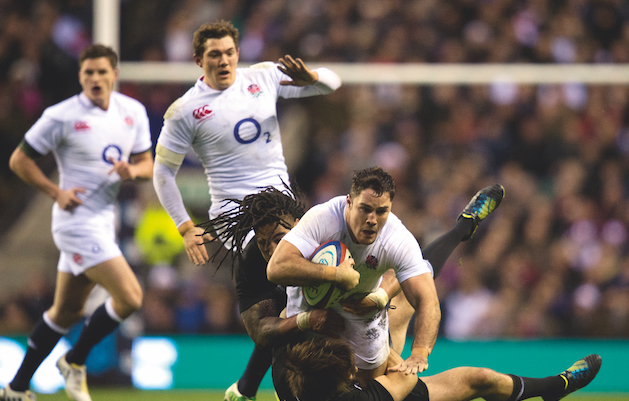Bookmaker Fitzdares takes a look at how different nations have fared at the Rugby Autumn Internationals
The Rugby Autumn Internationals were devised to keep the sport alive in between the eagerly anticipated Rugby World Cup tournaments, which happen every four years. Fitzdares takes a look at how different nations have fared.
Royal Ascot is the crown in the Flat racing season, drawing the biggest names to the Berkshire track in June each summer. Fitzdares delves into its history and remembers the biggest winners.
SPORTING WAGERS: RUGBY AUTUMN INTERNATIONALS
It may come as a surprise to read that Will Carling – capped 72 times by England and captain on 59 occasions – played professional rugby for less than three years. That’s a lot of matches in three years except, of course, his international career spanned almost a decade. The first seven were spent playing rugby as an amateur.
In 1995, exactly a century after rugby was split into two codes, league and union, the game became a professional sport. The significance of this being that players could now earn a living from rugby union. From there, standards went through the roof, as did the quality of the players. In Carling’s final year as an amateur, the average weight of the national team was 84.8kg; by the time England hosted the World Cup in 2015, it was 105.4kg, highlighting this huge shift at the upper echelons of the game.
This metamorphosis was driven, in part, by the increasingly large profile of the sport and the enhanced platforms upon which the players could showcase their abilities. What is now known as the Six Nations was the first major tournament. It started out as the Home Nations Championship in 1883, before becoming the Five Nations in 1910 and the Six Nations in 2000. The four home nations are joined by France and Italy, with England and Wales sharing the spoils for the most wins (39).
The southern hemisphere has its own equivalent: South Africa, Australia and New Zealand made up the inaugural Tri Nations in 1996. It is now the Rugby Championship, Argentina having made it a four-nation affair since 2012.
These competitive bubbles enable top-class, international competition, whilst providing an appetiser for rugby enthusiasts as they await the sport’s biggest prize: the Rugby World Cup. Held every four years since 1987, this is when northern and southern hemisphere teams clash in a battle to crown themselves as best team on the planet.
The prize is not just global acclaim but the honour of lifting the historic William Webb Ellis Cup, eponymously named after the Rugby School student who, in 1823, lifted the ball off the football pitch and charged down the field of play. From there, the game was born. Although this origin story is often disregarded, both the student and the school are still synonymous with the sport and the World Cup in particular.
However, despite being a magnificent tournament, one meeting every four years is a long time for fans to wait, so rugby-playing nations drew up bilateral agreements to keep players focused, fans engaged and the sport alive. These matches are called the Autumn Internationals and are mostly held between Six Nations and the Rugby Championship countries, with a splattering of other southern hemisphere teams such as Tonga and Fiji.
This month, England will be eager to exact revenge on the Springboks following their defeat in the 2019 World Cup final, whilst they also take on Australia at Twickenham. They will avoid a first meeting with New Zealand since that famous semi-final win two years ago. When England do meet the All Blacks, the match runs under the guise of the Hillary Shield, after famous New Zealand explorer Sir Edmund Hillary, while the Australia-England game is known as the Cook Cup, in honour of British explorer Captain Cook.
The first Autumn International took place in 1997, ending in a 15-15 draw at Twickenham. However, the most memorable in our minds was in 2012 (pictured above). The All Blacks came to Twickenham as World Champions on a 20-game unbeaten streak. We had them priced up as 1/10 favourites against an England side fresh from defeats to Australia and South Africa. That was our undoing. With New Zealand too short a price for anyone to bet, our book was lopsided with all the loyal bets flying in on the hosts at 13/2. With England set to be favourites for most of their matches this autumn, we’re hoping to be able to cheer them on without reservation.
By Fitzdares, Racing Bookmaker of the Year (fitzdares.com)





